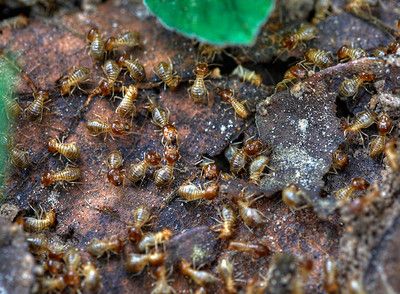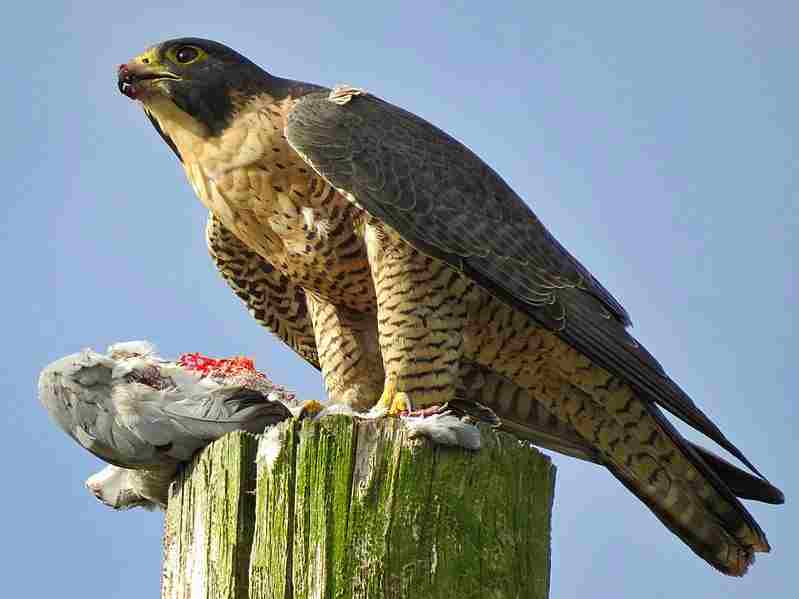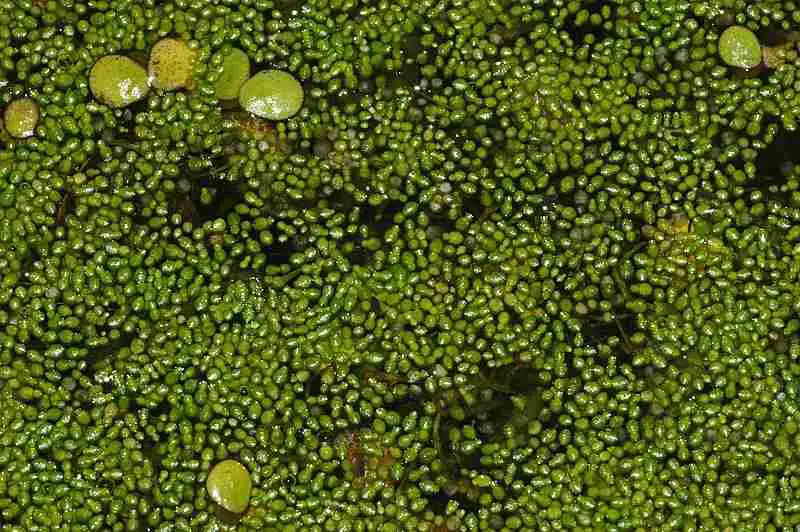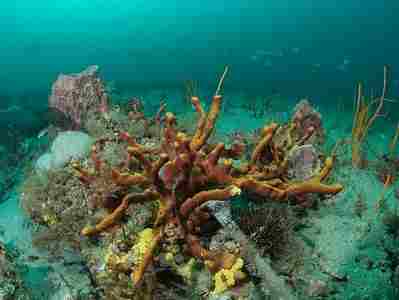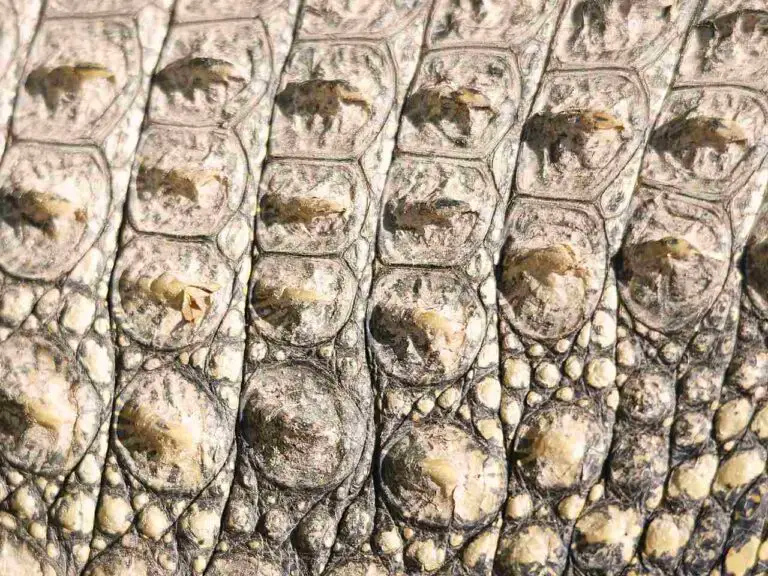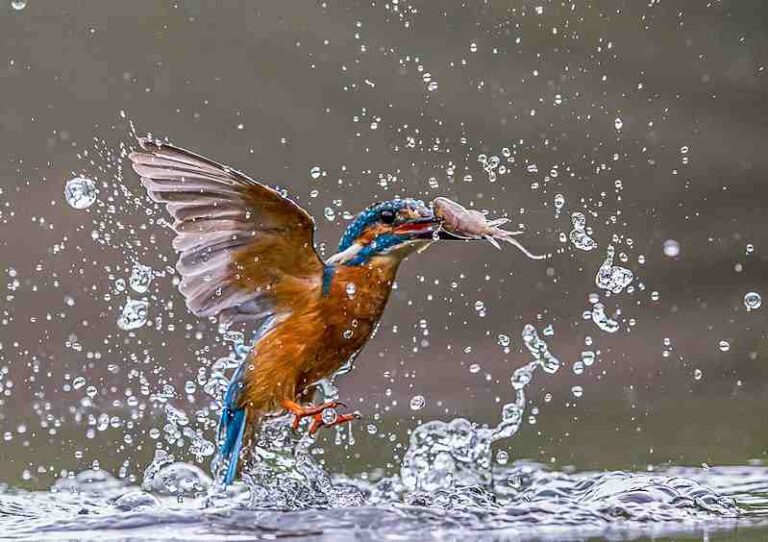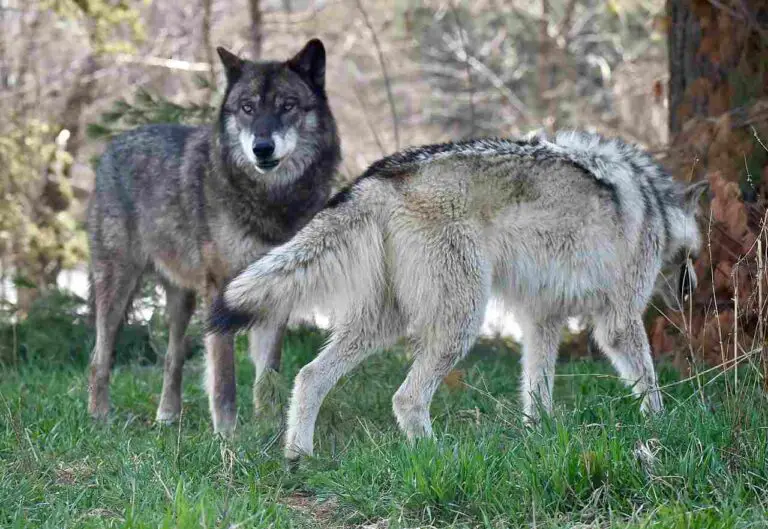5 Tropical Rainforest Biotic Factors and Characteristics Discussed
Tropical rainforest biotic factors are; rainforest producers; herbivorous, carnivorous and omnivorous consumers; as well as decomposers.
This article discusses the biotic factors in tropical rainforest ecosystems, as follows;
1). Tropical Rainforest Producers (as one of the Tropical Rainforest Biotic Factors)
Tropical rainforest producers are autotrophic organisms whose activities include the capture of solar radiation and the production of both bioenergy and biomass; through photosynthesis [1].
In the tropical rainforest, producers are mainly vascular plants, and their role as suppliers of biomass and bioenergy places them in trophic level 1; which is a basal and initial level from which energy-transfer originates in the food chain (and energy pyramid).
Examples of tropical rainforest producers are; epiphytes, trees, vines and ferns. These groups, while not including all producers in the forest, make up most of the observable vegetation, and have the greatest influence on the ecosystem.
Trees in the tropical rainforest are by far the most dominant producers. They produce the mist biomass, and play the most prominent role as carbon sinks, climate change-mitigators, contributors to the oxygen cycle; and drivers of carbon sequestration among other important processes.
Numerous species of trees can be found in rainforests, varying in physiological and patternistic features. The forest structure is most built by trees, which can be found at the top of the vegetative canopy, as well as in the understory.
Some examples of tree species that occur in the tropical rainforest are; rubber, xate, Ramón, ceiba, kauri, cecropia, teak, rosewood, kapok, and mahogany.
These trees serve as habitat for several rainforest animals including rodents and birds. Their usefulness as industrial raw materials and energy resources is accountable for the increasing rate of deforestation in many parts of the world, which is a major, current environmental issue.
Epiphytes are a group of non-parasitic plants that grow over surfaces, which could include branches and stems of other plants [5]. As non-parasitic organisms, epiphytes obtain nutrients from debris and other materials that accumulate around their growth-zone.
Examples of tropical rainforest epiphytes are bromeliads and orchids. Some non-vascular plants like lichens and mosses can also be classified as epiphytes due to their tendency to grow on surfaces.
Vines include plants that grow in a climbing pattern, usually because they lack reliable supporting structures of their own, like rigid stems.
On the contrary, the stems of vines are flexible and ropy, and grow around rigid structures like the stems of trees, in order to achieve vertical progression toward sunlight. As a result, their growth pattern is controlled by the orientation and accessibility of light for photosynthesis.
Other categories in which climbing plants of the tropical rainforest are classified include creepers and lianas; the latter being unique by the possession of relatively-thick, woody stems.
Passionflower is an example of a vine in the tropical rainforest.
Tropical rainforest ferns are spore-producing plants that mostly grow in shaded, humid areas.

2). Herbivorous Consumers in the Tropical Rainforest
Herbivorous consumers in the tropical rainforest are organisms whose dietary adaptations favor plant material as a primary food source.
They are also called rainforest primary consumers, because they are non-photosynthetic and can feed directly on the autotrophs.
Through their feeding activities; herbivorous consumers contribute immensely to the sustainability of rainforests, by influencing the growth pattern and adaptation of plants, and serving as a source of food to non-herbivorous consumers.
Plant materials consumed by rainforest herbivores include twigs, leaves, seeds, nuts, flowers and roots.
The tropical rainforest is arguably the most-robust terrestrial ecosystem, in terms of the species richness and diversity of its herbivore population.
Examples of herbivorous consumers in the tropical rainforest are; ruminants like deer, primates, rodents, insects, some reptiles, birds, and other mammals like the sloth. Some of these are discussed briefly.
Primates constitute one of the most popular and dominant group of herbivores in the tropical rainforest. These organisms are evolutionarily advanced, and have digestive and dental specializations for plant consumption.
The preferred choice of plant material(s) differ from one primate specie to another, and potential food sources include leaves, seeds, bark, and fruits.
Through their feeding activities, rainforest primates facilitate pollination and seed dispersal that enable the plant population to thrive.
Examples of rainforest primates are; lemurs, monkeys and apes.
Reptiles that are herbivorous in the tropical rainforest include; green iguanas, turtles (which mostly inhabit forests for hibernation) and tortoises. They may feed on leaves, twigs, flowers, grasses and fruits among other plant materials. In some cases, these reptiles may also prey on insects, thereby exhibiting omnivorous behavior.
Herbivorous birds in the tropical rainforest include numerous species that may feed on nectar, nuts, fruits, flowers and leaves, among others. Examples of such birds are; parrots and toucans.
Herbivorous insects are fairly abundant in tropical rainforests. They include grasshoppers, butterflies, beetles, some ant species, and caterpillars. Fruits and leaves are the most preferred food sources for these organisms, and they may also be preyed upon by birds and insectivorous reptiles, as well as some mammals.
The sloth is a distinctive mammalian herbivore in tropical rainforests, and is characterized by adapted limbs and claws for clinging to tree-branches, and sluggish motion. Sloths also tend to have moss and algae on their fur, and feed mostly on leaves [4].

3). Carnivorous Consumers in the Tropical Rainforest (as one of the Tropical Rainforest Biotic Factors)
The biodiversity of the tropical rainforest is also evident in its carnivore population, which is large and comprises of multiple species.
Carnivorous consumers in tropical rainforests, may be found in any of various trophic levels, where they play the important role of regulating the population-size of prey to sustainable levels.
In order to capture prey, rainforest carnivores have various, specialized adaptive features.
Examples of carnivorous consumers in the tropical rainforest are felines like pumas, ocelots and jaguars; small mammals, some birds, insects, reptiles and amphibians. The specific groups and individuals representing carnivores in any given rainforest depend on its geographic location and bioclimatic conditions.
Felines in the tropical rainforest are known for their skill and agility, as well as stealth; all of which make them excellent predators.
Most of these animals are solitary in nature, and they may be classified as secondary, tertiary or quaternary consumers, depending on the degree of diversity of the forest in which they occur.
Food for tropical rainforest felines includes small and large mammals, reptiles and birds.
Small mammalian carnivores in the tropical rainforest rely on agility and stealth to capture their prey, which consists of insects, eggs, birds, reptiles and rodents. Their behaviors range from diurnal to nocturnal, and some members of thus group may exhibit occasional omnivorous tendencies, as can be observed with the civet, which can consume fruits as part of its diet [3].
Birds that are carnivorous in tropical rainforests, include insect-eating individuals like the flycatcher (also called tropical kingbird), and raptors like the harpy eagle; which is also one of the largest birds of prey on Earth [2].
Ants represent the most dominant group of carnivorous insects in the tropical rainforest, with some species feeding on other insects, organic remains, and small mammals. They in turn serve as prey for the anteater, whose insectivorous diet consists predominantly of termites and ants.
Tropical amphibians and reptiles with carnivorous feeding habits include boas that capture prey by constriction, and venomous snakes; as well as insect-eating lizards and poison-dart frogs.

4). Omnivorous Consumers in the Tropical Rainforest
As earlier implied in this article, the tendency to adopt omnivorous feeding behavior is an adaptive, mostly-transient one.
This means that omnivorous consumers constitute a diffuse group that has no distinct boundaries defining its members or their precise dietary preferences.
Herbivorous primates and reptiles can exhibit omnivorous behavior by adding insects to their food sources, and this happens on several occasions.
The same can be said for birds like the toucan, as well as some herbivorous rodents, and insects.
5). Decomposers in the Tropical Rainforest (as one of the Tropical Rainforest Biotic Factors)
Decomposers make up a very important biotic factor in the tropical rainforest, because their metabolic activities facilitate the recycling of nutrients in the ecosystem.
The term 'decomposers' covers a fairly broad group of organisms that play a role in biodegradation, and breakdown of complex organic compounds in detrital matter. Such processes are instrumental towards forest-soil conservation and nutrient management.
Members of this group include microbes like fungi and bacteria; and detrivorous feeders like millipedes, termites and earthworms.

Conclusion
Tropical rainforest biotic factors are;
1. Tropical Rainforest Producers
2. Herbivorous Consumers in the Tropical Rainforest
3. Carnivorous Consumers in the Tropical Rainforest
4. Omnivorous Consumers in the Tropical Rainforest
5. Decomposers in the Tropical Rainforest
References
1). Malhi, Y. (2012). "The productivity, metabolism and carbon cycle of tropical forest vegetation." Journal of Ecology 100(1):65 - 75. Available at: https://doi.org/10.1111/j.1365-2745.2011.01916.x. (Accessed 31 May 2023).
2). Miranda, E. (2018). "Prey Composition of Harpy Eagles ( Harpia harpyja ) in Raleighvallen, Suriname." Tropical Conservation Science 11(1):194008291880078. Available at: https://doi.org/10.1177/1940082918800789. (Accessed 31 May 2023).
3). Mudappa, D.; Kumar, A.; Chellam, R. (2010). "Diet and Fruit Choice of the Brown Palm Civet Paradoxurus Jerdoni , a Viverrid Endemic to the Western Ghats Rainforest, India." Tropical Conservation Science 33(18):282-300. Available at: https://doi.org/10.1177/194008291000300304. (Accessed 31 May 2023).
4). Urbani, B.; Bosque, C. (2007). "Feeding ecology and postural behaviour of the three-toed sloth (Bradypus variegatus flaccidus) in northern Venezuela." Mammalian Biology - Zeitschrift fur Saugetierkunde 72(6):321-329. Available at: https://doi.org/10.1016/j.mambio.2006.10.013. (Accessed 31 May 2023).
5). Zhao, M.; Geekiyanage, N.; Xu, J.; Khin, M. M.; Nurdiana, D. R.; Paudel, E.; Harrison, R. D. (2015). "Structure of the epiphyte community in a tropical montane forest in SW China." PLoS One. 2015 Apr 9;10(4):e0122210. Available at: https://doi.org/10.1371/journal.pone.0122210. (Accessed 31 May 2023).
